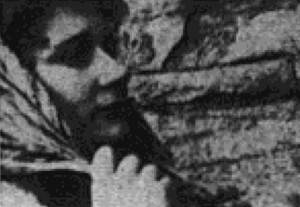
"The Stray is a well written little story concerning a lonely little woman who returns to her husband, but finds he wants no more to do with her, for reasons explained as the story unfolds. Its ring of sincerity, coupled with good acting on the part of both the woman and her husband, was most surely the primary basis for the film landing in the top ten" PSA Journal, Aug. 1967, 36.
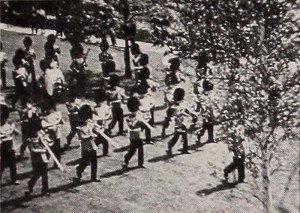
"In Streets of Peace, Lewis B. Sebring, jr., presents a manifold accomplishment in film. Here is a record of the New York World's Fair 1939, but a record which, because of its selectivity, gives the impression of completeness in setting forth a single theme, although the material is both voluminous and varied. Here, also, is an interpretation of the epic idea behind the foreign participation in this great American exposition, the vision of peace, which has since been so rudely interrupted. Mr. Sebring takes his camera through the streets of peace, literally, and we see one after another of the foreign buildings and exhibits at the Fair; we also look at the different national celebrations in the Court of Peace. The visit of the King and Queen of England is recorded in considerable detail. After a scene of children of many lands uniting in a gathering in the Children's World, we find the pointed query as to what these youngsters will make of the "world of tomorrow," and the picture closes with distinguished shots of the United States Building, with its flag and the word "Peace," which appears on its façade. Mr. Sebring's titling is admirable, both in wording and in execution. His Kodachrome exposures have less good moments, but his camera handling is otherwise pleasing. Here is a workmanlike and finished recording of a great international event." Movie Makers, Dec. 1939, 635-636.
"Mathis Kverne returns to the winner's circle with another delightful and imaginative animated cartoon, Strokets Kavalerer—which has been translated for us "Main Street Romeos." This time we meet two boy paint brushes who try, with varying degrees of success, to win the hand of an attractive girl brush. One, a wordly boulevardier, plies her with costly presents, while the other, a real booby, offers her naive, if presumptuously intimate, gifts. When the lady has at last been won—by the booby, of course—we follow the happy couple through their marriage and the birth of their first born, a yellow brushlet of undetermined sex. Although this film may not captivate the viewers as completely as did Mr. Kverne's Muntre Streker (Ten Best 1952) that picture's promise is more than fulfilled. The animation here is smoother in all respects, the development of the story line more definite and the personalities of the individual characters more precisely realized. The result is a film of lighthearted charm which will enchant one and all. And puzzle them too, for the animated methods used by Kverne are still his own secret!" PSA Journal, Jan. 1954, 49.
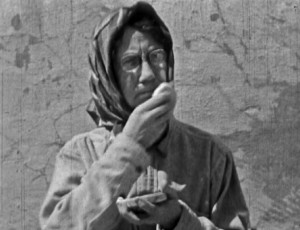
"A Study in Reds, that women's club film of a sovietized America, has been successfully completed and the club, a very pillar of society in its community, has been made safe, by the experiment, for Democracy. The Five Year Plan called for the production of ten eggs a day, so that there was none left for the onetime owner of the chickens; children seemed to get mixed on their return from the communistic nursery; and the police ate all the tidbits from the workers' lunches, so that in the end the good ladies of the club returned contentedly to the stultifying, but more reassuring, banalities of private ownership. Miriam Bennet, ACL, of Wisconsin Dells, was the director and cameraman of this reversal of the customary Sovkino drama" Movie Makers, Aug. 1932, 361.
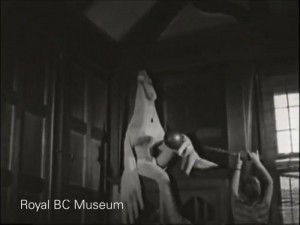
"Produced as a gift to Dorothy Burritt's husband, filmmaker Oscar Burritt (who was working in Toronto at the time), this is an offbeat study of life at their Vancouver apartment -- suite 2, 1960 Robson Street. The camera explores the apartment and the household memorabilia, and Dorothy is seen sitting for a portrait by painter Peter Bortkus. Later some friends drop by for a screening of Sacha Guitry's film Pearls of the Crown, followed by a party. Among the guests are Moira Armour, film editor Maureen Balfe, UBC student Stanley Fox, photographer Peter Varley, and an unnamed figure wearing a bird costume. Most of the people shown would have been involved with the National Film Society of Canada (Vancouver Branch). Suite Two won honourable mention (amateur category) at the first Canadian Film Awards in 1949." (BC Archives)
The film was restored in 1986 by the British Columbia Archives.
"Scenes of a wedding party held in a large garden. There is a large marquee, the bride and groom are mingling with guests and there are a large number of bridesmaids. Some of the guests are extremely well-dressed - furs and big hat for one woman - and the priest is shown talking to some of the guests. As the couple depart, the guests assemble on the house steps to throw streamers. Other scenes show a family in the garden, with the children playing ring-a-ring-a-roses." (NWFA Online Database)
"Family scenes of playing in the garden at Westworth, Cockermouth. The children play in the garden with a trolley, an elderly couple walk in the grounds and the family pose for a group photograph." (NWFA Online Database)
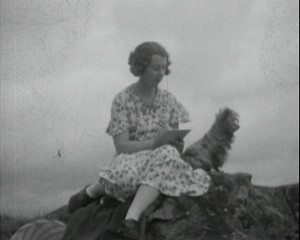
"Amateur filmmaker and cinema historian H.A.V. Bulleid employs rapid montage and a sense of foreboding in this rural tragedy set in the Welsh countryside. On farmland in rural Wales, where crumbling farm buildings reflect the rural desolation, a young lady spends her holidays wandering the fells with her ever reliable dog. When she meets a young farmhand, a romance develops. But as the girl grows closer to the young man, she pays less attention to her dog. And when the dog is left at the farmhouse as the pair goes rock-climbing, tragedy ensues. Sensing a problem, the dog searches the fells as day turns to night. But will he find his master? And will the young lovers survive?" (EAFA Database)
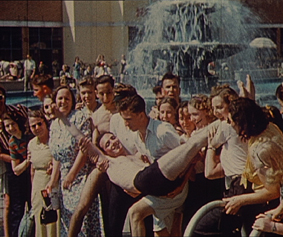
Amateur colour film of a fundraising carnival and summer activities at Clacton-on-Sea in the month before World War II was declared. (EAFA)
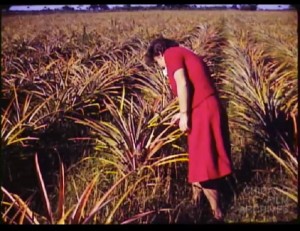
"2 part edited travelogue of the industries and everyday life in featured cities of Cuba. Part 1 begins in Havana before travelling to smaller cities, with a focus on buildings, crops and the everyday lives of the people. Part 2 primarily focuses on industry and includes scenes of a tile factory, basket weaving, as well as the farming of potatoes, sugar cane, bananas, and peanuts. The film also features historical monuments, boating, children at school, cock fights, vendors selling wares, and fishing. People demonstrate manual methods of labor like harvesting crops and cutting grass with machines lead by cattle." Chicago Film Archives.
Total Pages: 39